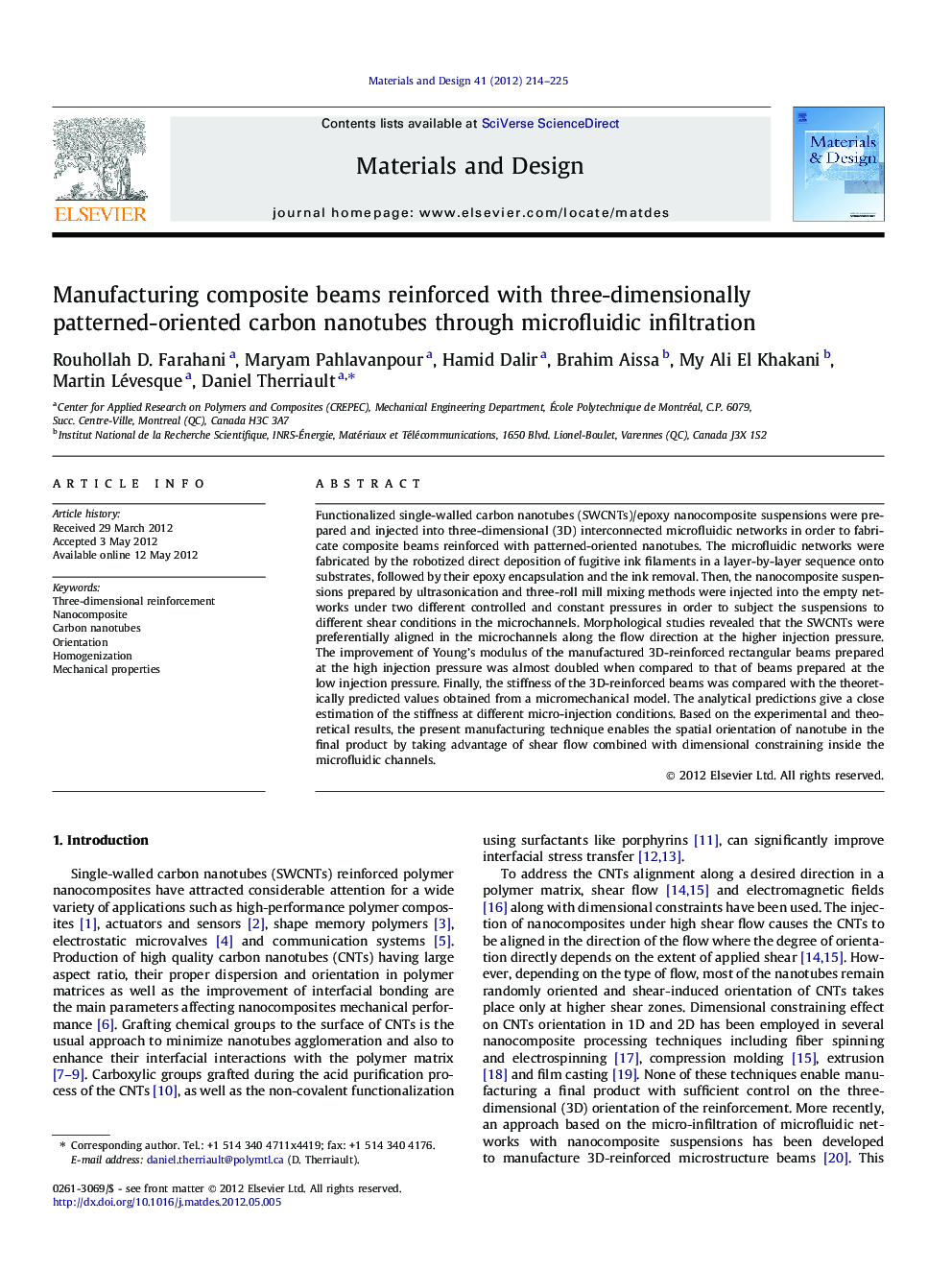| Article ID | Journal | Published Year | Pages | File Type |
|---|---|---|---|---|
| 830540 | Materials & Design (1980-2015) | 2012 | 12 Pages |
Functionalized single-walled carbon nanotubes (SWCNTs)/epoxy nanocomposite suspensions were prepared and injected into three-dimensional (3D) interconnected microfluidic networks in order to fabricate composite beams reinforced with patterned-oriented nanotubes. The microfluidic networks were fabricated by the robotized direct deposition of fugitive ink filaments in a layer-by-layer sequence onto substrates, followed by their epoxy encapsulation and the ink removal. Then, the nanocomposite suspensions prepared by ultrasonication and three-roll mill mixing methods were injected into the empty networks under two different controlled and constant pressures in order to subject the suspensions to different shear conditions in the microchannels. Morphological studies revealed that the SWCNTs were preferentially aligned in the microchannels along the flow direction at the higher injection pressure. The improvement of Young’s modulus of the manufactured 3D-reinforced rectangular beams prepared at the high injection pressure was almost doubled when compared to that of beams prepared at the low injection pressure. Finally, the stiffness of the 3D-reinforced beams was compared with the theoretically predicted values obtained from a micromechanical model. The analytical predictions give a close estimation of the stiffness at different micro-injection conditions. Based on the experimental and theoretical results, the present manufacturing technique enables the spatial orientation of nanotube in the final product by taking advantage of shear flow combined with dimensional constraining inside the microfluidic channels.
Graphical abstractFigure optionsDownload full-size imageDownload as PowerPoint slideHighlights► Composite beams reinforced with 3D patterned-oriented nanotubes are manufactured. ► Process-induced orientation of nanotubes in 3D microfluidic networks is studied. ► The stiffness is compared with the values obtained from a micromechanical model. ► The model predictions give a close estimation at different processing conditions. ► The present manufacturing method opens new prospects for the design of composites.
